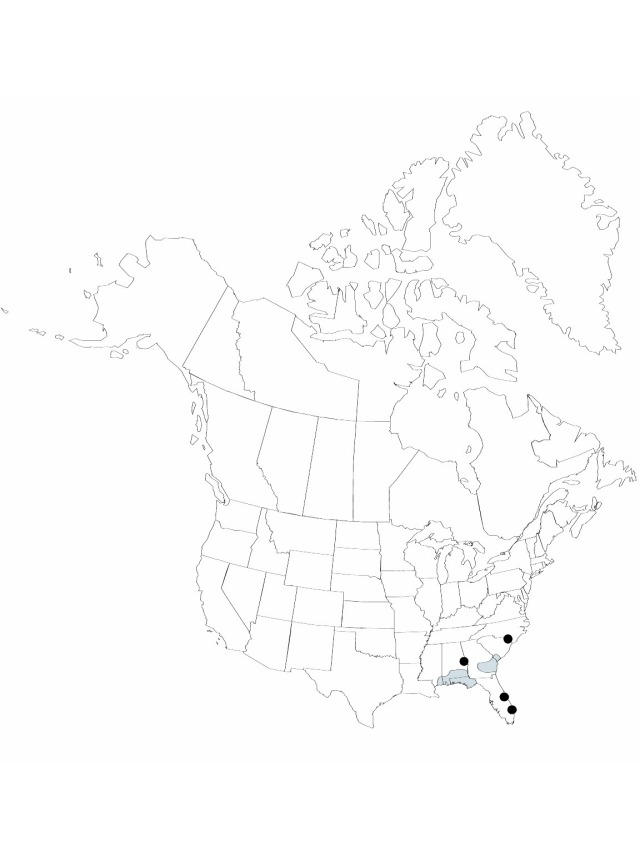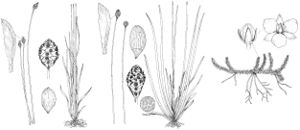Herbs, perennial, densely cespitose, 20–60 cm, base thickened. Stems compact. Leaves in fans, 15–20 cm; sheaths straw-colored to dark-brown, dull, papillate to rugose, minutely scabrous; blade dull green, flattened, plane, 3–12 mm wide, papillate to minutely scabrous, margins minutely scabrous. Inflorescences: scape sheaths exceeded slightly by leaves; scapes straight, linear, terete, distally slightly compressed or broadly oval, to 2 mm, rugulose, minutely scabrous, strongly 2-ribbed, ribs minutely scabrous; spikes prevalently ovoid to ellipsoid, 8–20 mm, apex acute; fertile bracts 5–7 mm, margins entire, apex shape rounded. Flowers: lateral sepals included, dark-brown, slightly curved, 5–7 mm, keel scarious, lacerate; petals unfolding in morning, blade obtriangular, 3–3.5 mm; staminodes bearded. Seeds mealy, ellipsoid, 6 mm, lined longitudinally with papillae, less conspicuously cross-lined. 2n = 18.
Phenology: Flowering summer–fall (all year south).
Habitat: Sands and peats of wet pine savanna, cypress pond edges, bogs, ditches
Elevation: 0–150 m
Distribution

Ala., Fla., Ga., Miss., N.C., S.C.
Discussion
Xyris serotina is perhaps the most distinctive species of Xyrid over its range. Certainly, it is overall the most scabrous in foliage, and its leaves are unusually long in relation to its scapes.
Selected References
None.
Lower Taxa
"thin" is not a number.
